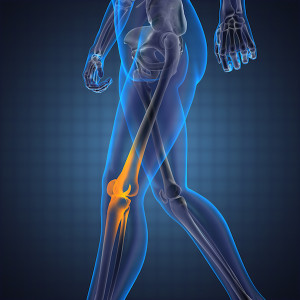
Ligaments refer to bands of robust, elastic connective tissue surrounding a joint. These tissues offer support to the joint and restrict its movement. The knee joint may become unstable when the ligaments are damaged. Such damage typically occurs following a sports-related injury.
A torn ligament leads to severe limitations on knee movement which results in the inability to turn, pivot, or twist the leg.
If other treatments are unable to resolve this condition, then it may need to be treated surgically. Board certified orthopedic surgeon http://goughmd.com/meet-dr-gough/ provides hip and knee surgery and other procedures to patients in Phoenix, Scottsdale, Arizona, and surrounding locations.
FOUR MAJOR LIGAMENTS IN THE KNEE
The knee comprises four major ligaments. The ligaments in the knee join the thighbone (femur) to the shin bone (tibia) and include:
Anterior Cruciate Ligament (ACL)
This ligament is present in the central part of the knee which controls the forward motion and rotation of the shin bone (tibia).
Posterior Cruciate Ligament (PCL)
This ligament is located in the central part of the knee and controls the backward motion of the shin bone (tibia).
Medial Collateral Ligament (MCL)
This ligament offers stability to the inner knee.
Lateral Collateral Ligament (LCL)
This ligament offers stability to the outer knee.
TREATMENTS FOR KNEE LIGAMENT TEAR
The initial medical treatment to address an injured knee ligament may include:
- Rest
- Application of ice packs (to decrease the inflammation that occurs within a few hours of the injury)
- Compression (using an elastic bandage or brace)
- Elevation
- Pain medications
The patient may receive the following treatments for repairing a knee ligament tear:
- Exercises to strengthen the muscles in the area
- Protective knee brace (to be used during exercise)
- Limitations on physical activities
If the knee ligament tears completely, it could cause the knee to become unstable. Individuals suffering from a torn ligament in the knee may not be able to undertake routine activities which involve turning and twisting at the knee.
In such cases, the knee may “give-way” or buckle. If the patient does not respond to medical treatments, they may have to undergo surgery for ligament repair.
ACL RECONSTRUCTIVE SURGERY
The surgeon will use a graft to replace the torn ligament while performing ACL reconstructive surgery. In a majority of cases, these grafts are sourced from the patient’s body. If a bone fragment and the ligament have separated from the rest of the bone, the surgeon will conduct a repair surgery to repair the avulsion fracture. They will reattach the bone piece to the main bone.
The surgeon will place tiny incisions in the knee to perform ACL reconstructive surgery. Subsequently, they will insert an arthroscope as well as other small surgical tools through these incisions.
However, in certain cases, the patient may require an open surgery which involves a more significant incision. The patient should choose a well-qualified and experienced orthopedic surgeon to perform this repair surgery.
ARTHROSCOPIC SURGERY
A majority of surgeons consider the arthroscopic surgery for ACL better as it enables the surgeon to visualize the internal anatomy of the knee without placing significant incisions. This is an advanced technique that minimizes the risk of complications. Patients undergo less discomfort and pain and heal faster as the incision is smaller.
Board certified orthopedic surgeon Dr. Brandon Gough receives patients for hip and knee surgery and other procedures from Phoenix, Scottsdale, Arizona, and nearby areas.
For more information about hip and knee procedures and treatments by Arizona Board certified orthopedic surgeon, Brandon Gough, M.D., please click here or call us at 602-359-3088. Taking new patients in and around Phoenix, Scottsdale, Glendale, Tempe, Mesa and surrounding Arizona cities.


